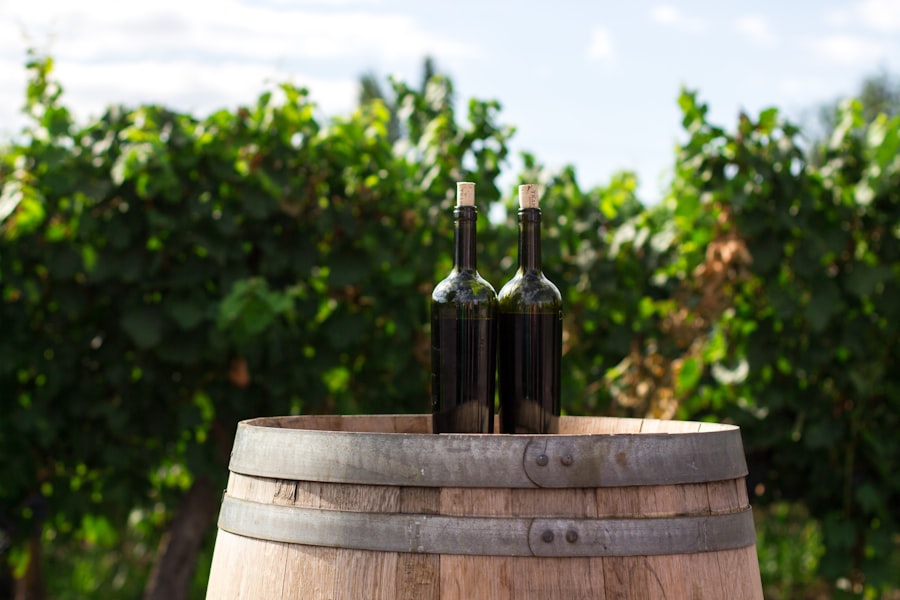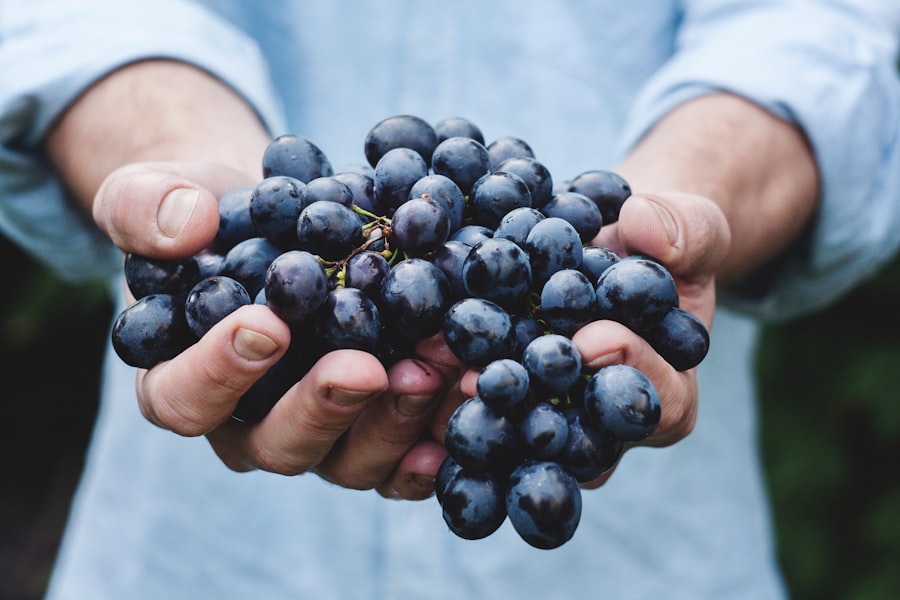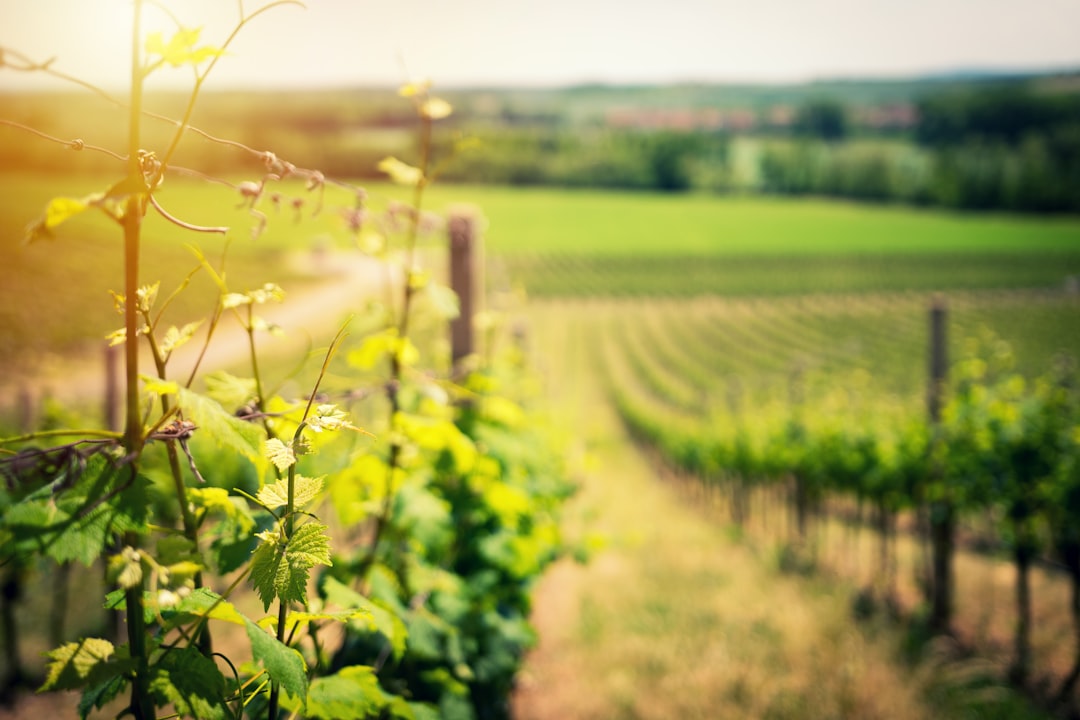The history of wine cooked cuisine is a rich tapestry woven through centuries of culinary evolution, cultural exchange, and the development of viticulture. The earliest records of wine date back to around 6000 BC in the region that is now Georgia, where archaeological evidence suggests that fermented grape juice was used not only for drinking but also for cooking. Ancient civilizations, including the Egyptians and Greeks, recognized the value of wine as both a beverage and a cooking ingredient.
In ancient Rome, wine was a staple in the diet, often used to enhance the flavors of various dishes. The Romans were particularly adept at incorporating wine into their cooking, using it in sauces, marinades, and even desserts. As trade routes expanded during the Middle Ages, the use of wine in cooking spread throughout Europe.
The French, in particular, began to refine the art of using wine in their culinary practices, leading to the development of classic dishes that are still celebrated today. The Renaissance period saw a surge in culinary experimentation, with chefs using wine to create complex flavors and elevate the dining experience. By the 18th and 19th centuries, wine had become an integral part of haute cuisine, with renowned chefs like Auguste Escoffier incorporating it into their recipes.
This historical journey illustrates how wine has transcended its role as a mere beverage to become a vital component of culinary artistry.
Key Takeaways
- Wine has been used in cooking for centuries, with evidence of wine cooked cuisine dating back to ancient civilizations.
- Wine cooked cuisine involves using wine as an ingredient in cooking to enhance flavors and tenderize meats.
- There are various types of wine cooked dishes, including coq au vin, beef bourguignon, and wine-poached pears.
- Wine adds depth and complexity to dishes, and different types of wine can be paired with specific ingredients to elevate flavors.
- Cooking with wine requires choosing the right type of wine, understanding flavor profiles, and using it in moderation to avoid overpowering the dish.
Understanding the Basics of Wine Cooked Cuisine
At its core, wine cooked cuisine refers to dishes that incorporate wine as an essential ingredient during the cooking process. This technique is not merely about adding a splash of wine for flavor; it involves understanding how wine interacts with other ingredients and how it can transform a dish. The type of wine used—whether red, white, or sparkling—can significantly influence the final taste profile.
For instance, red wines tend to impart deeper, richer flavors, while white wines often add brightness and acidity. The cooking process itself plays a crucial role in how wine affects a dish. When wine is heated, its alcohol content evaporates, leaving behind concentrated flavors and aromas.
This transformation can enhance the overall complexity of a dish, making it more appealing to the palate. Additionally, wine can act as a tenderizer for meats due to its acidity, breaking down proteins and resulting in a more succulent texture. Understanding these fundamentals is essential for anyone looking to explore the world of wine cooked cuisine.
Exploring Different Types of Wine Cooked Dishes

Wine cooked dishes span a wide array of culinary traditions and techniques, each showcasing the versatility of this ingredient. One classic example is coq au vin, a traditional French dish where chicken is braised slowly in red wine along with mushrooms, onions, and bacon. The slow cooking process allows the flavors to meld beautifully, resulting in a rich and hearty meal that exemplifies the essence of wine cooked cuisine.
Another notable dish is risotto alla Milanese, which incorporates white wine into its creamy base. The addition of wine not only enhances the flavor but also contributes to the dish’s luxurious texture. In Italian cuisine, wine is often used in sauces for pasta dishes, such as a classic marinara or a rich Bolognese sauce.
The use of wine in these sauces adds depth and complexity that elevates the entire meal. Furthermore, seafood dishes like mussels in white wine broth highlight how different types of wine can complement various ingredients, creating harmonious flavor profiles.
The Role of Wine in Enhancing Flavors in Cooking
| Wine Type | Flavor Enhancement |
|---|---|
| Red Wine | Enhances richness and depth in red meat dishes |
| White Wine | Brings out the flavors in seafood and poultry dishes |
| Dessert Wine | Complements sweet and fruity flavors in desserts |
| Sparkling Wine | Can be used to add acidity and brightness to dishes |
Wine serves multiple roles in cooking beyond mere flavor enhancement; it acts as a catalyst for chemical reactions that can elevate a dish’s overall profile. When used in marinades, for example, wine helps to tenderize meats while infusing them with flavor. The acidity in wine breaks down tough fibers in meat, making it more palatable and juicy after cooking.
This is particularly evident in dishes like beef bourguignon, where marinating beef in red wine prior to slow cooking results in an incredibly tender and flavorful dish. Moreover, the aromatic compounds found in wine can interact with other ingredients to create new flavor dimensions. For instance, when sautéing vegetables in olive oil and adding white wine, the alcohol evaporates while leaving behind complex flavors that enhance the dish’s overall profile.
This interaction is particularly important in sauces; a splash of wine can brighten up a heavy sauce or add depth to a light one. Chefs often rely on this transformative power of wine to create layered flavors that keep diners coming back for more.
Pairing Wine Cooked Cuisine with Different Types of Wines
Pairing wine cooked cuisine with appropriate wines can elevate the dining experience to new heights. The general rule of thumb is to match the type of wine used in cooking with the wine served alongside the meal. For instance, if a dish features red wine as an ingredient—such as coq au vin or beef stew—serving a similar varietal alongside can create a harmonious experience.
A full-bodied red like Cabernet Sauvignon or Merlot complements these rich flavors beautifully. Conversely, when preparing dishes that utilize white wine—such as chicken piccata or seafood risotto—pairing them with a crisp Sauvignon Blanc or a buttery Chardonnay can enhance the meal’s freshness and acidity. Additionally, sparkling wines can be an excellent choice for lighter fare or appetizers that feature wine-cooked elements.
The effervescence cuts through richness and adds an element of celebration to any meal. Understanding these pairing principles allows home cooks and chefs alike to create memorable dining experiences that resonate with guests.
Tips for Cooking with Wine

Cooking with wine requires some finesse and understanding to achieve optimal results. One essential tip is to choose quality wines that you would enjoy drinking; this principle applies equally whether you are using red or white wines in your dishes. Cooking with inferior wines can lead to undesirable flavors that detract from the overall quality of your meal.
Additionally, it’s crucial to consider the cooking method when selecting your wine; for example, robust red wines work well for braising and stewing, while lighter whites are ideal for sautéing or deglazing. Another important aspect is timing; knowing when to add wine during the cooking process can significantly impact flavor development. For instance, adding wine early on allows it to reduce and concentrate its flavors, while adding it later can preserve its fresh notes and acidity.
Deglazing pans with wine after searing meats captures those flavorful browned bits left behind, creating a rich base for sauces. Lastly, always taste as you go; adjusting seasoning and acidity levels throughout the cooking process ensures that your final dish achieves balance and depth.
The Health Benefits of Wine Cooked Cuisine
Incorporating wine into cooked dishes can offer several health benefits when consumed in moderation. Wine contains antioxidants such as resveratrol and flavonoids, which have been linked to various health benefits including improved heart health and reduced inflammation. When used in cooking, these antioxidants remain present in the final dish, contributing positively to overall nutrition.
Moreover, cooking with wine can enhance the nutritional profile of meals by adding depth without excessive calories or unhealthy fats. For example, using wine as a base for sauces allows chefs to create flavorful accompaniments without relying on heavy creams or excessive oils. Additionally, many traditional recipes that utilize wine often include nutrient-rich ingredients such as vegetables and lean proteins, further enhancing their health benefits.
Thus, when prepared thoughtfully, wine cooked cuisine can be both delicious and beneficial for one’s health.
Exploring Regional Variations of Wine Cooked Cuisine
Wine cooked cuisine varies significantly across different regions and cultures, each bringing unique ingredients and techniques to the table. In France, regions like Burgundy are renowned for their coq au vin made with local Pinot Noir wines, while Provence showcases dishes like ratatouille that may incorporate white wines for added depth. Italian cuisine offers its own variations with dishes like osso buco cooked with white wine and served alongside risotto.
In Spain, regional specialties such as cochinillo asado (roast suckling pig) may be paired with local red wines like Tempranillo or Garnacha during preparation. Similarly, Portuguese cuisine features dishes like bacalhau à brás (codfish) where white wine enhances the flavors of this beloved national dish. Each region’s unique climate and agricultural practices influence how they utilize local wines in their culinary traditions, resulting in an exciting array of flavors and techniques that celebrate both food and drink.
Incorporating Wine Cooked Cuisine into Everyday Meals
Incorporating wine cooked cuisine into everyday meals doesn’t have to be an elaborate affair; simple techniques can elevate weeknight dinners into something special. For instance, using leftover white or red wines to deglaze pans after sautéing vegetables or proteins can create quick yet flavorful sauces that transform ordinary meals into gourmet experiences. A simple chicken breast sautéed with garlic and finished with a splash of white wine can become an elegant dish served over pasta or rice.
Additionally, home cooks can experiment with marinades that include wine as a key ingredient; marinating meats overnight not only infuses them with flavor but also tenderizes them for better texture during cooking. Even everyday staples like risotto can be enhanced by incorporating a splash of white wine during preparation—this technique adds complexity without requiring extensive culinary skills or time investment. By embracing these methods, anyone can enjoy the benefits of wine cooked cuisine on a regular basis.
The Art of Creating a Wine Cooked Cuisine Menu
Crafting a menu centered around wine cooked cuisine involves thoughtful consideration of flavors, textures, and pairings that complement one another beautifully. A well-structured menu might begin with an appetizer such as mussels steamed in white wine broth served alongside crusty bread for dipping—a perfect introduction that sets the tone for what’s to come. Following this could be a main course like braised short ribs cooked in red wine served over creamy polenta; this dish not only showcases the depth of flavor achieved through slow cooking but also pairs wonderfully with a glass of Cabernet Sauvignon.
Desserts can also benefit from incorporating wine; consider poached pears in red wine served with mascarpone cheese for a delightful finish that ties back into the theme of the meal. Each course should flow seamlessly into the next while highlighting different aspects of how wine enhances flavors throughout the dining experience. By carefully selecting dishes that showcase various techniques and regional influences within wine cooked cuisine, chefs can create memorable menus that leave guests eager for more.
Exploring the Future of Wine Cooked Cuisine
As culinary trends continue to evolve alongside advancements in viticulture and gastronomy, the future of wine cooked cuisine appears promising and dynamic. With an increasing focus on sustainability and local sourcing, chefs are likely to explore innovative ways to incorporate organic wines into their cooking practices while emphasizing seasonal ingredients from nearby farms. This shift not only supports local economies but also enhances flavor profiles by utilizing fresh produce at its peak ripeness.
Furthermore, as global cuisines continue to intermingle through cultural exchange and travel experiences, we may see new interpretations of traditional dishes that incorporate diverse wines from around the world—think Asian-inspired dishes featuring French wines or Mediterranean recipes utilizing South American varietals. This fusion approach could lead to exciting culinary innovations that challenge conventional boundaries while celebrating both food and drink traditions from various cultures. In conclusion, exploring the world of wine cooked cuisine offers endless possibilities for creativity and flavor enhancement within culinary practices across cultures worldwide—an art form that continues to evolve while remaining deeply rooted in history and tradition.



